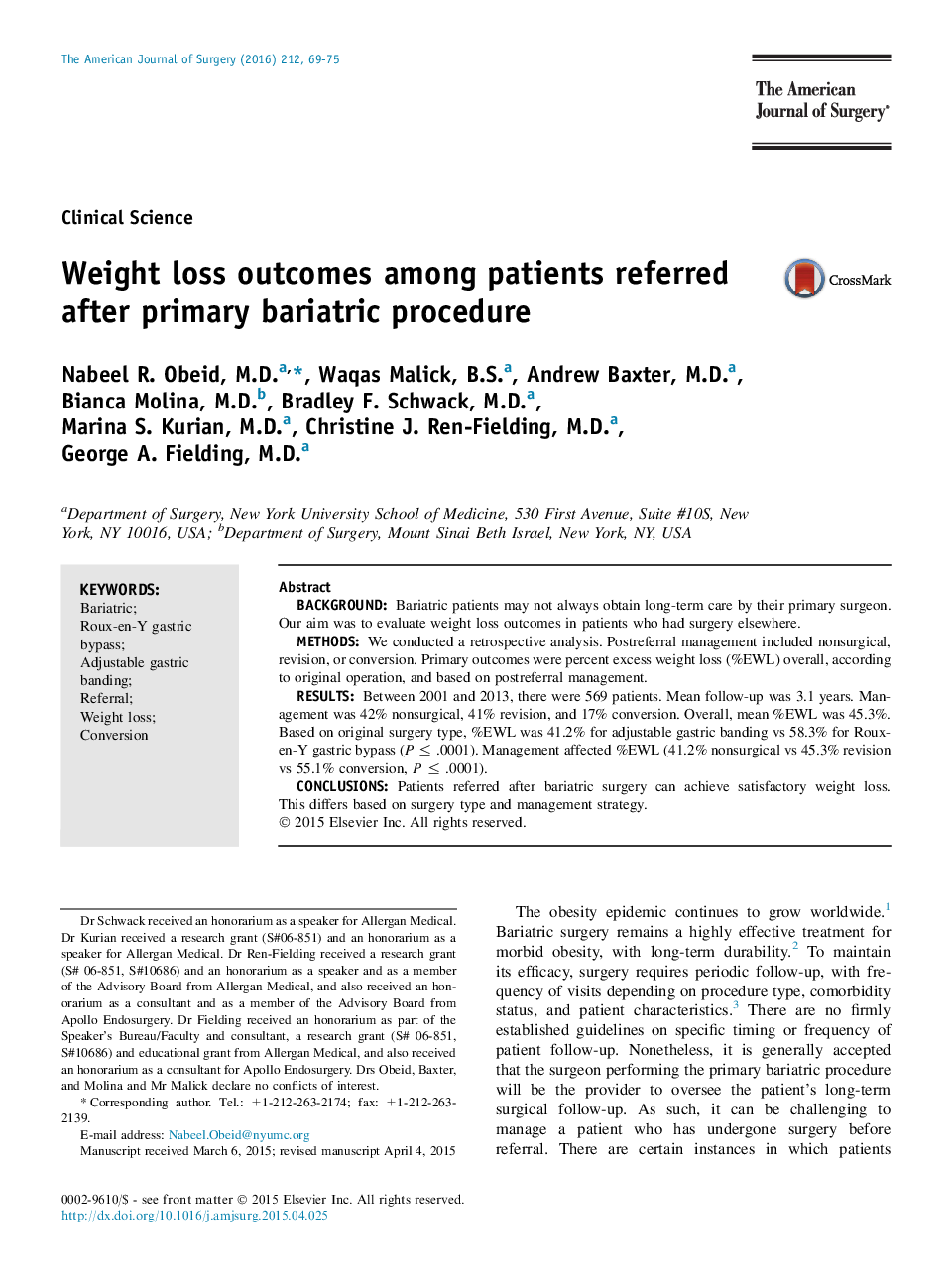| Article ID | Journal | Published Year | Pages | File Type |
|---|---|---|---|---|
| 4278120 | The American Journal of Surgery | 2016 | 7 Pages |
•We reviewed patients referred after primary bariatric procedure.•Postreferral management was 42% nonsurgical, 41% revision, and 17% conversion.•Among all patients, mean %EWL was 45.3%.•Based on original surgery type, %EWL was 41.2% for AGB vs 58.3% for RYGB.•Management affected %EWL (41.2% nonsurgical, 45.3% revision, and 55.1% conversion).
BackgroundBariatric patients may not always obtain long-term care by their primary surgeon. Our aim was to evaluate weight loss outcomes in patients who had surgery elsewhere.MethodsWe conducted a retrospective analysis. Postreferral management included nonsurgical, revision, or conversion. Primary outcomes were percent excess weight loss (%EWL) overall, according to original operation, and based on postreferral management.ResultsBetween 2001 and 2013, there were 569 patients. Mean follow-up was 3.1 years. Management was 42% nonsurgical, 41% revision, and 17% conversion. Overall, mean %EWL was 45.3%. Based on original surgery type, %EWL was 41.2% for adjustable gastric banding vs 58.3% for Roux-en-Y gastric bypass (P ≤ .0001). Management affected %EWL (41.2% nonsurgical vs 45.3% revision vs 55.1% conversion, P ≤ .0001).ConclusionsPatients referred after bariatric surgery can achieve satisfactory weight loss. This differs based on surgery type and management strategy.
